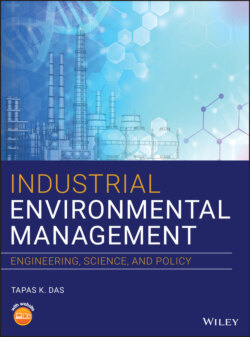Читать книгу Industrial Environmental Management - Tapas K. Das - Страница 79
2.6.1.6 Tennessee Valley Authority Kingston Coal Power Plant Toxic Ash Sludge Spill
ОглавлениеOn 22 December 2008, a retention pond wall collapsed at Tennessee Valley Authority's (TVA) Kingston plant in Harriman, Tennessee, releasing a combination of water and fly ash that flooded 12 homes, spilled into nearby Watts Bar Lake, contaminated the Emory River, and caused a train wreck. Officials said 4–6 ft of material escaped from the pond to cover an estimated 400 acres of adjacent land. A train bringing coal to the plant became stuck when it was unable to stop before reaching the flooded tracks (White 2008). Hundreds of fish were floating dead downstream from the plant. Water tests showed elevated levels of lead and thallium (Knoxville News Sentinel 2008a, b).
Originally, TVA estimated that 1.7 million cubic yards of waste had burst through the storage facility. Company officials said the pond had contained a total of about 2.6 million cubic yards of sludge. However, the company revised its estimates on 26 December, when it released an aerial survey showing that 5.4 million cubic yards (1.09 billion gal) of fly ash was released from the storage facility (Knoxville News Sentinel 2008a). Several days later, the estimate was increased to over 1 billion gal spilled (CNN 2008). The size of the spill was larger than the amount TVA claimed to have been in the pond before the accident, a discrepancy that TVA was unable to explain (New York Times 2008). The TVA spill was 100 times larger than the Exxon Valdez spill in Alaska, which released 10.9 million gal of crude oil (Encyclopedia of the Earth 2018), and it was expected to take weeks and cost tens of millions of dollars to clean it (Knoxville News Sentinel 2008c). According to the TVA, rain totaling 6 in. in 10 days and 12 °F temperatures were factors that contributed to the failure of the earthen embankment (Valley Precipitation 2008).
The 40‐acre pond was used to contain ash created by the coal‐burning plant (White 2008). The water and ash that were released in the accident were filled with toxic substances. Each year coal preparation creates waste containing an estimated 13 T of mercury, 3236 T of arsenic, 189 T of beryllium, 251 T of cadmium, and 2754 T of nickel, and 1098 T of selenium (Associated Press 2008; Valley Precipitation 2008).
